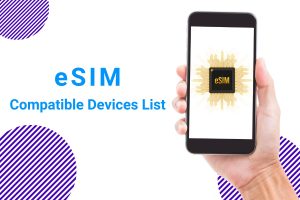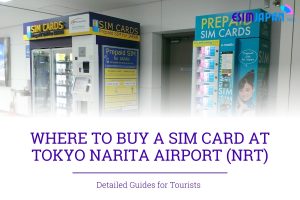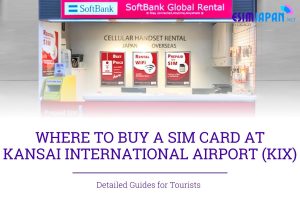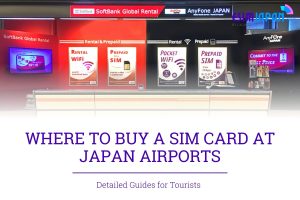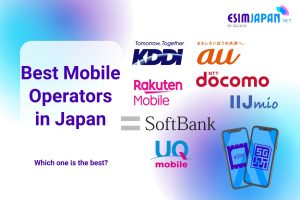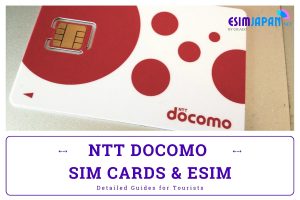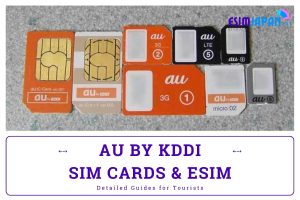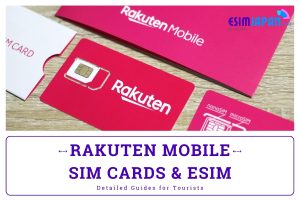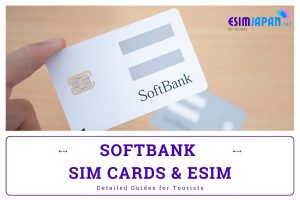Traveling to Japan can be an exciting experience, but staying connected is important too. Using your phone in Japan is possible, but requires some preparation beforehand. This guide will provide tips on keeping your phone working properly and making the most of it during your time in Japan.
Table of Contents
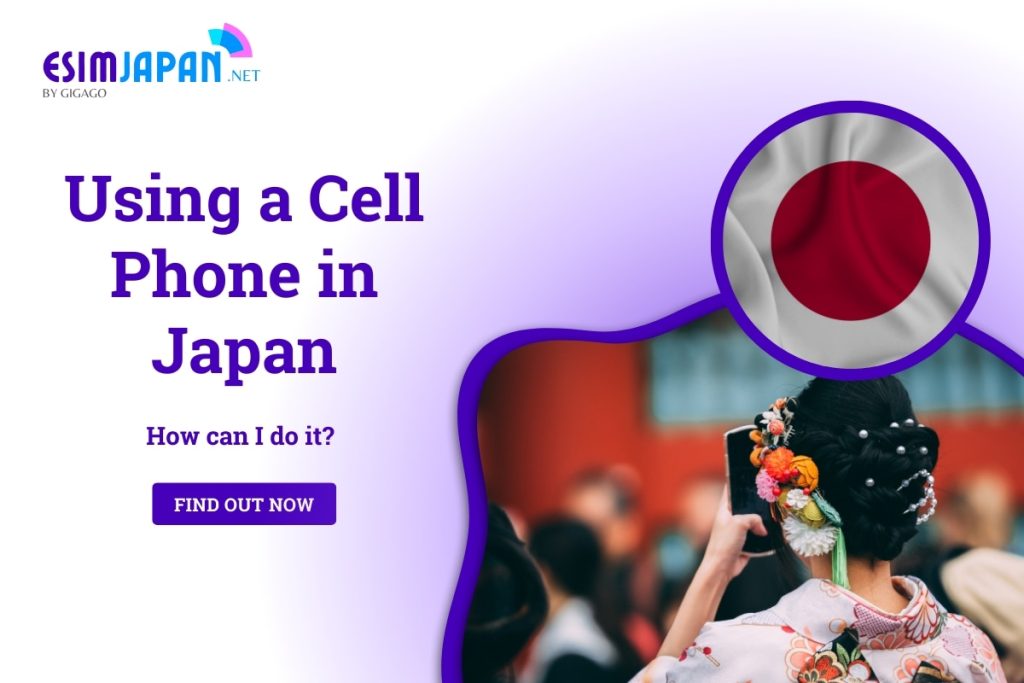
I. Can I use my cell phone in Japan?
Yes. If you’re wondering about using your cell phone in Japan and whether you can connect to the internet, it’s definitely possible to use your own phone in Japan, but whether it’s the best option for you depends on a few factors:
- Locked or unlocked phone: Carrier-locked phones won’t accept Japan SIM cards. Get your device unlocked before traveling, or it won’t work with local service upon arrival in Japan.
- Bands: Verify your phone supports common Japan frequencies, as older models may not. Most new phones work, but check band compatibility to avoid connectivity issues, especially with older devices. Compatible bands ensure stable cellular service.

- Adapters: Japan uses Type A plugs, which are the same as the ones used in the United States and Canada. However, if your phone charger has a different type of plug, you’ll need a travel adapter. You can buy one at most electronics stores or online.
II. How to keep my cell phone connected in Japan
Tourists visiting Japan have multiple options for mobile connectivity, such as portable WiFi hotspots, public WiFi access, roaming, local SIMs, and eSIM:
| Option | Pros | Cons | Price Range (per week/USD) |
| Free Local WiFi |
Widely available in hotels, cafes, train stations, etc. No additional cost if already included in accommodation. |
Unreliable speed and connection stability. Limited coverage, especially in rural areas. Security concerns on public networks. |
Free - US$5 (depending on accommodation's wifi plan) |
| Roaming |
No need to switch SIM cards or purchase additional devices. Convenient for occasional use or short trips. |
Can be extremely expensive for data, especially for heavy users. Variable costs depending on your home carrier's roaming charges. May not be accessible in all areas. |
US$20 - US$100+ |
| Local SIM Card |
Affordable data plans with various options to suit your needs. Wide coverage throughout Japan. Faster and more reliable connection than free WiFi. |
Requires switching SIM cards, which can be inconvenient. May require passport and identification for purchase. |
US$10 - US$40 |
| eSIM |
Convenient virtual SIM, no need for physical card. Can easily switch between eSIMs from different providers. Often offers good data packages for travelers. |
Requires a compatible eSIM-enabled phone. Limited availability compared to physical SIM cards. |
US$8 - US$22 |
Additional Considerations:
- Length of Stay: Shorter trips might benefit from free WiFi or smaller data plans, while longer stays might make local SIM cards or eSIMs more economical.
- Group Travel: Sharing a portable Wi-Fi or data plan on an eSIM can be cost-effective for groups.
- Convenience: eSIM and local SIM cards offer the most flexibility and control, while free WiFi is the easiest option but with limitations.
Affordable Japan eSIMs for Every Trip. Browse easy-to-use eSIM data packages from 3-30 days, starting at just $5. No SIM swapping – buy, download, and install your digital SIM before travel. Stay seamlessly connected with fast LTE data at low prices across Japan. Find the perfect plan for your trip today!
III. Getting the most out of your cell phone in Japan during travel
Traveling with your trusty cell phone in Japan is a great way to stay connected, navigate, and capture memories. But with a different environment and potential language barriers, you’ll want to optimize your phone for a smooth experience. Here are some practical tips on utilizing data, batteries, chargers, and settings:
- Translation Apps: Download apps like Google Translate or Naver Papago for real-time language assistance.
- Storage: Make sure your phone has enough storage space before your trip in case you want to download maps or take a lot of photos/videos.
- Portable Charger: A portable power bank is essential for long days of exploration. Choose one with enough capacity for multiple charges.
- Battery-Saving Settings: Reduce screen brightness, turn off location services when not needed, and close unnecessary apps to extend battery life.
- Universal Chargers: Consider a universal charger that works with multiple plug types for future travel.
- Power Banks with Built-in Cables: Choose a power bank with built-in charging cables for different devices to save space and weight.
Follow these tips to keep your cell phone handy in Japan. Save data by using offline maps and free Wi-Fi. Keep your battery healthy too. Tweak settings to make the most of your phone during your trip.
IV. FAQs
Can my phone connect to 911 or emergency services while in Japan?
In most cases, yes – dialing Japan’s emergency number 119 or 911 should still work even without an active cell plan. However, confirming emergency connectivity directly with your carrier is always recommended.
Do I need to arrange anything with my phone carrier before traveling?
It’s highly advisable to contact your home carrier in advance to enable international roaming or other overseas connectivity options based on your trip’s length and destination. Doing this prevents surprises once you land in Japan.
If my phone is unlocked, can I insert a local Japan SIM card?
Likely yes – most unlocked GSM devices are technically compatible with inserting local Japan SIMs that you can rent or purchase after arrival. Confirm the proper card size and that your device has the cellular bands used in Japan for complete compatibility.
Can I use calling/texting apps like WhatsApp or FaceTime as alternatives?
Yes, third-party internet-based communication apps often work very reliably in Japan and offer cheaper options for messaging and calls compared to cell networks. Just ensure you have a proper data connection whether via SIM card or WiFi.
Is buying a portable WiFi hotspot device better than relying on my phone?
For most trips, renting a Japan pocket WiFi unit or wireless router is preferable – they offer extended battery life, larger data allowances, and better nationwide connectivity compared to solely relying on your smartphone’s roaming capabilities. Having both available provides the most flexibility.
Can I use a US cell phone in Japan?
Yes, you can use a US cell phone in Japan if it meets a few conditions. First, your phone must support Japan’s 4G LTE or 5G networks. If you plan to use a Japanese SIM card, your phone needs to be unlocked. Alternatively, you can enable international roaming with your US carrier, though this can be expensive unless you have an international plan. For a more cost-effective option, you can purchase a Japanese SIM card or rent a pocket Wi-Fi device.
Can I use my AT&T cell phone in Japan?
Yes, you can use your AT&T cell phone in Japan. AT&T offers international roaming options like the “International Day Pass” or “Passport” plan, which can help reduce roaming costs. However, your phone must support Japan’s 4G LTE or 5G networks. If you prefer to use a local Japanese SIM card instead of AT&T’s services, your phone needs to be unlocked.
V. What’s the most efficient way to connect my phone in Japan?
In conclusion, using a cell phone in Japan is available for international travelers. Moreover, there are different options for tourists to stay connected when visiting Japan, including physical SIMs, eSIM, and WiFi.
After comparing all options, Japan eSIM is the top pick. It offers affordable prices, easy online activation, so no hunting for SIM cards, and reliable coverage wherever our trip takes us across the country. Between cost, convenience, and quality service, esimjapan.net gives us exactly what we need without hassle.
